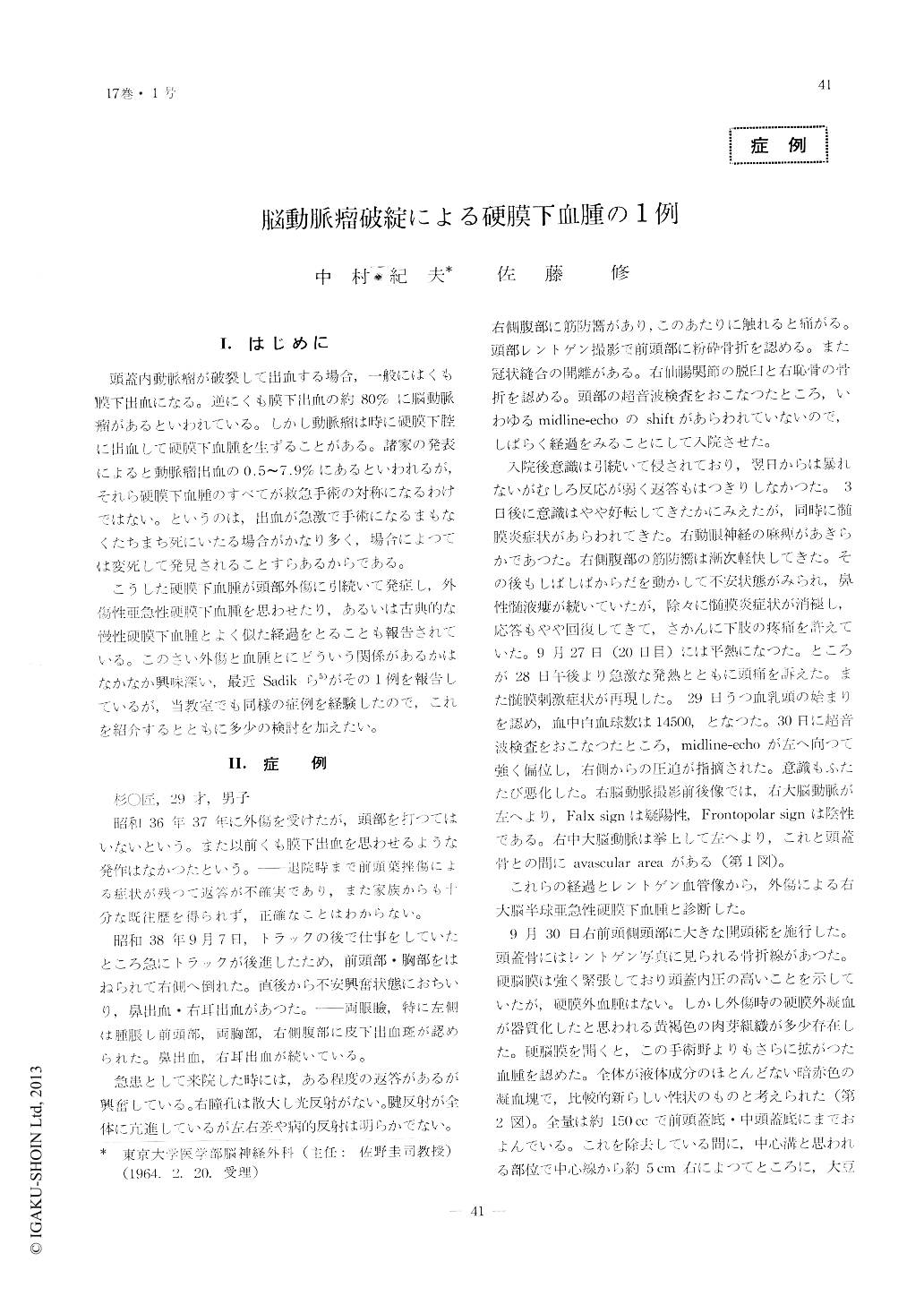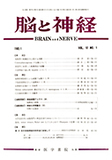Japanese
English
- 有料閲覧
- Abstract 文献概要
- 1ページ目 Look Inside
I.はじめに
頭蓋内動脈瘤が破裂して出血する場合,一般にはくも膜下出血になる。逆にくも膜下出血の約80%に脳動脈瘤があるといわれている。しかし動脈瘤は時に硬膜下腔に出血して硬膜下血腫を生ずることがある。諸家の発表によると動脈瘤出血の0.5〜7.9%にあるといわれるが,それら硬膜下血腫のすべてが救急手術の対称になるわけではない。というのは,出血が急激で手術になるまもなくたちまち死にいたる場合がかなり多く,場合によつては変死して発見されることすらあるからである。
こうした硬膜下血腫が頭部外傷に引続いて発症し,外傷性亜急性硬膜下血腫を思わせたり,あるいは古典的な慢性硬膜下血腫とよく似た経過をとることも報告されている。このさい外傷と血腫とにどういう関係があるかはなかなか興味深い,最近Sadikら5)がその1例を報告しているが,当教室でも同様の症例を経験したので,これを紹介するとともに多少の検討を加えたい。
A patient, 29-year-old man, was transported to the neurosurgical department of the University of Tokyo Hospital in stupor soon after an automobile accident on Sept. 7, 1963. On admission, the neurological and echo-encephalographical examination revealed no intracranial hematoma.
Since then the patient had been getting well day by day for 3 weeks, when he complained severe headache and his body temperature was elevated abruptly. Large subdural hematoma was found on the right side by cerebral angiography which was removed surgically.
In a cource of the operation, a small aneurysm, a peanut in size, was found in the subdural space at the rolandic artery which was the origin of the bleeding.
The aneurysm was removed.
The patient was discharged with slight neurological disability on November 25.
Clinico-pathological findings of the hematoma and the aneurysm suggested that the hematoma was attri-buted not to immediate rupture of the aneurysm by the trauma, but to the secondary bleeding from the aneurysm during convalescence.

Copyright © 1965, Igaku-Shoin Ltd. All rights reserved.


